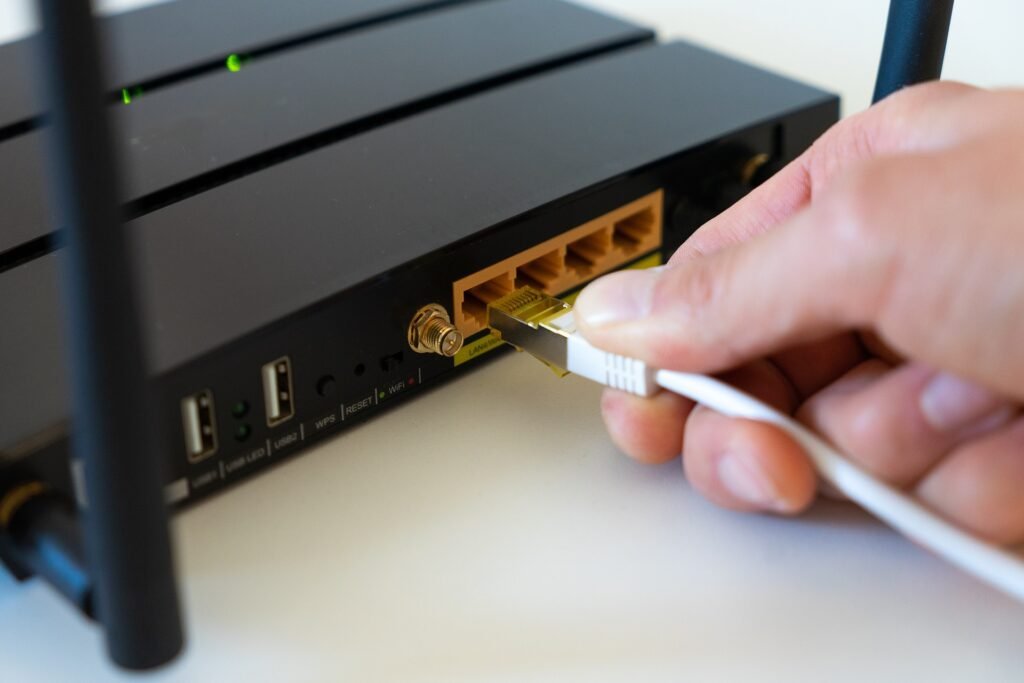PC organizing is the foundation of current correspondence, associating gadgets and empowering data to stream flawlessly. From home organizations to huge corporate frameworks, organizing enables us to share, store, and access information at remarkable velocities. This article will investigate the fundamentals of PC organizing, including the kinds of organizations, the conventions that oversee them, and the apparatuses that make network the board conceivable. We’ll likewise give an examination table of systems administration types and a visit table with featured discussions for simple reference.
What is Computer Networking?
PC organizing includes interfacing numerous gadgets — PCs, servers, printers, from there, the sky is the limit — so they can convey and share assets. Organizing has developed altogether, with each stage empowering new abilities and innovations, from the beginning of Neighborhood (LANs) to the globalized, interconnected universe of the web we experience today.
PC organizing depends on a scope of equipment (like switches, switches, and links) and programming (conventions, firewalls, and organization the board instruments) to make secure, proficient, and versatile frameworks.
Types of Computer Networks
Understanding the kinds of organizations can assist with deciding the best arrangement in view of explicit necessities, whether for a home, private company, or huge enterprise.
Local Area Network (LAN)
A LAN is an organization inside a restricted geographic region, normally a home or office. It’s intended to associate gadgets in nearness, permitting them to share information and assets like printers and capacity gadgets. LANs are known for their high velocity and dependability.
Wide Area Network (WAN)
A WAN covers a bigger geographic region, interfacing different LANs across urban communities, nations, or even worldwide. The web is the biggest illustration of a WAN. Organizations use WANs to connect branches in various areas, permitting representatives to impart and get to organization assets from anyplace.
Metropolitan Area Network (MAN)
A MAN is bigger than a LAN yet more modest than a WAN, frequently covering a city or enormous grounds. Monitors are utilized by colleges, districts, or huge organizations to interface their workplaces across a metropolitan region.
Wireless Local Area Network (WLAN)
A WLAN works inside a similar region as a LAN yet interfaces gadgets remotely, frequently utilizing Wi-Fi. WLANs are advantageous for cell phones, as they permit opportunity of development without links.
Key Networking Protocols
Conventions are fundamental to systems administration; they direct the way that information is sent across networks. Various conventions are involved relying upon the prerequisites for information move, security, and unwavering quality.

Transmission Control Protocol/Internet Protocol (TCP/IP)
TCP/IP is the essential convention for information transmission over the web. TCP guarantees information is communicated dependably, while IP handles the steering of parcels to their objective. Together, they permit consistent correspondence across assorted gadgets and organizations.
Hypertext Transfer Protocol (HTTP/HTTPS)
HTTP is the underpinning of web perusing, working with information move between web servers and clients. HTTPS adds a layer of safety by scrambling the information, making it ideal for communicating touchy data like passwords and installment subtleties.
File Transfer Protocol (FTP)
FTP is utilized for moving records between a client and a server. It’s regularly utilized by associations to trade enormous records and offers choices for confirmation, despite the fact that it needs encryption, which makes it less secure.
Simple Mail Transfer Protocol (SMTP)
SMTP is fundamental for email correspondence, dealing with the sending and getting of messages between mail servers. When coordinated with conventions like IMAP or POP, it permits clients to get to and oversee messages across gadgets.
Hardware Components in Networking
Organizing equipment assumes a pivotal part in laying out, making due, and getting networks. Various gadgets perform explicit undertakings to keep the organization utilitarian.
Router

Switches direct information bundles between networks, picking the best way to their objective. In a home arrangement, a switch empowers web network and may likewise give Wi-Fi. In bigger organizations, endeavor switches oversee traffic across various organizations and guarantee information is effectively steered.
Switch
A switch interfaces gadgets inside a LAN, permitting them to straightforwardly impart. Dissimilar to a switch, which interfaces organizations, a switch is centered around associating gadgets inside a solitary organization.
Firewall
A firewall is a security gadget that screens approaching and active traffic, sifting information in view of safety rules. It safeguards networks from unapproved access and digital dangers.
Access Points

Passageways give Wi-Fi to an assigned region, frequently expanding network inclusion. In bigger arrangements, different passageways are utilized to guarantee consistent availability across huge structures or grounds.
Comparison Table: Types of Computer Networks
This table features the principal attributes of various organization types to assist you with understanding which arrangement may be best for explicit requirements.
| Network Type | Coverage Area | Speed | Security | Ideal Use Cases |
|---|---|---|---|---|
| LAN | Small (home/office) | High | High | Offices, homes, schools |
| WAN | Large (country/worldwide) | Moderate to low | Moderate | Global businesses, internet backbone |
| MAN | City or campus | Moderate | Moderate | Universities, cities |
| WLAN | Small to medium | Moderate | Moderate to high | Homes, cafes, public spaces |
Chat Table Notes for Quick Reference
- LAN for Local Connectivity: Ideal for small, centralized networks with high-speed needs.
- WAN for Global Reach: Best for organizations with offices in multiple cities or countries.
- MAN for Metro Access: Suited for large campuses, covering a city or university area.
- WLAN for Wireless Freedom: Convenient for mobile devices and public areas.
- High Security Needed? Use firewalls and encryption protocols, especially on WANs and WLANs.
Tools for Network Management and Security
Viable organization the board guarantees execution, steadiness, and security. Here are a few fundamental devices for overseeing PC organizations:
Network Monitoring Tools
Instruments like SolarWinds and PRTG Organization Screen give constant bits of knowledge into network execution, making managers aware of any issues, like bottlenecks or blackouts. Checking instruments can likewise assist with following transfer speed use and improve network execution.
Network Configuration Management
Arrangement the executives instruments, for example, Cisco Prime and NetMRI, assist overseers with robotizing setup changes across network gadgets. This is fundamental for enormous organizations where manual setup is tedious and inclined to blunders.
Intrusion Detection Systems (IDS)
An IDS, similar to Grunt or Suricata, screens network traffic for dubious movement. By recognizing likely dangers, an IDS can make managers aware of unapproved access endeavors, information breaks, or other security dangers.
Virtual Private Network (VPN)
VPNs secure information by encoding it as it traversed public or shared networks. This is particularly helpful for telecommuters, as it permits them to get to organization assets safely from anyplace.
Choosing the Right Network Setup
Picking the right organization arrangement relies upon factors like the quantity of clients, information move needs, security necessities, and geographic area. For example, an independent venture with a solitary office might profit from a LAN arrangement, while an organization with branches across different urban communities will require a WAN. At times, a blend of organization types might be ideal.
Small Businesses
Private companies frequently depend on LANs or WLANs for quick, secure nearby access. A remote LAN arrangement can give portability to gadgets inside the workplace while keeping the organization reasonable and savvy.
Large Enterprises
Enormous organizations frequently work WANs, permitting them to associate workplaces all over the planet. This arrangement requires hearty safety efforts like firewalls, VPNs, and interruption recognition frameworks to safeguard information as it goes between areas.
Home Networks
Home clients commonly use WLANs for comfort, associating numerous gadgets like workstations, cell phones, and brilliant televisions. Security is as yet fundamental; utilizing a safe secret key and empowering firewall settings can assist with safeguarding individual information.
Future of Computer Networking

As the Web of Things (IoT) keeps on extending, organizing needs are developing. IoT gadgets, from brilliant home devices to modern sensors, require secure and productive organization availability. The presentation of 5G innovation is additionally reforming organizing by giving quicker, more solid remote associations, making remote work, distributed computing, and video conferencing more proficient.
Key Takeaways
PC organizing is the structure that permits gadgets to convey and share information. Each organization type, convention, and gadget adds to a consistent progression of data, whether in a little office or across the globe. By understanding the parts of systems administration and how they cooperate, you can come to additional educated conclusions about network arrangement, instruments, and security rehearses.
With continuous progressions in innovation, organizing keeps on developing, addressing the requirements of an associated world. From LANs to WANs, PC networks are vital in each part of current life, empowering everything from business activities to unique interactions.

